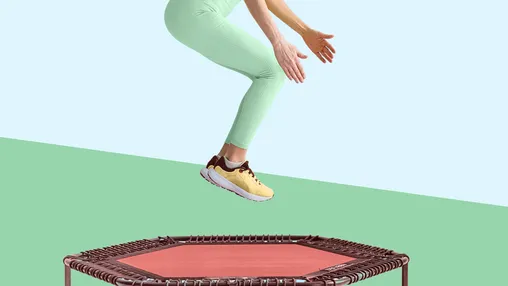7 Great Exercises for Depression

Exercise isn’t a depression cure-all — there’s no such thing. But plenty of research shows that exercise can reduce or even prevent symptoms of depression.
Not sure where to start or what activities to try? Here are seven great exercises that science suggests can help ease depression symptoms.
1. Go for a Run for an All-Natural Mood Boost
“Endorphins reduce your perception of pain and trigger a positive feeling in the body,” adds Sanam Hafeez, PsyD, a neuropsychologist based in New York City.
2. Lift Your Mood by Lifting Some Weights
How do barbells and similar equipment brighten your mood? For some people with mild to moderate depression, weight training can be a somewhat meditative practice, says Dr. Hafeez. “While you are weight training, your mind is focused on the task at hand and not thinking about anything else,” she says.
Not to mention, there are other benefits, such as increased muscle definition, elevated blood flow, and hard work — all of which can improve your outlook and give you a deep sense of satisfaction when you reach your goals, Hafeez says.
Just be sure to start slowly and use the assistance of a personal trainer if needed.
9 Activities for Managing Loneliness

Next up video playing in 10 seconds
3. Combine Yoga With Other Treatments to Feel Even Better
“Eastern traditions such as yoga have a wonderful antidepressant effect in that they improve flexibility; involve mindfulness, which breaks up repetitive negative thoughts; increase strength; make you aware of your breathing; improve balance; and contain a meditative component,” says Norman E. Rosenthal, MD, a clinical professor of psychiatry at the Georgetown University School of Medicine in Washington, DC.
Dr. Rosenthal suggests starting with a yoga class in your area so you can be sure that you’re doing the movements and poses properly. Group yoga offers social benefits, too, Hafeez adds.
4. Relieve Stress With Graceful Tai Chi Moves
Practicing tai chi in a group setting may also play a role in depression relief. “A group class can reinforce a sense of autonomy and connectedness with others. You can also develop a social support network in an exercise class that you might not form when exercising alone,” says Hafeez.
5. Walk Regularly to Help Ease the Blues
Simply putting one foot in front of the other may be the trick to feeling better — that’s because walking is an aerobic exercise that’s suited for almost everyone. All it takes is a pair of comfortable, supportive shoes, and you’re ready to go.
“Practical wisdom suggests that doing something is better than doing nothing in terms of physical activity,” says Dr. Muzina. If depression has made you sedentary, start off slowly and gradually increase time and distance, he advises.
Hafeez agrees. “If you set too high of expectations, you may self-blame and feel guilty if you don’t meet those expectations. Set expectations that are realistic, such as going on a five-minute walk,” she explains.
6. Get a Healthy Dose of Sunlight With Outdoor Activities
“Choose whatever [outdoor activity] works for you, depending on your functioning level, energy, and preferences,” says Shoshana Bennett, PhD, a clinical psychologist based in Los Angeles.
7. Break Out of a Funk by Bouncing
Having a hard time finding an exercise you enjoy? One simple strategy is to bounce. Jumping on a mini trampoline, also known as a rebounder, is a fun way to work your cardiovascular system without taxing your joints.
“You don’t need to jump, but bend your knees and bounce as quickly as you can for a few minutes,” says Dr. Bennett. “This is an easy way to oxygenate your brain and get some endorphins flowing.”
Like other forms of aerobic exercise, bouncing on a trampoline can help your brain release serotonin as well as oxytocin (another mood-boosting brain chemical), Hafeez says.
“The spike in neurochemicals will give the feeling of being happy and help with depression,” Hafeez says. Rebounding exercises also increase blood flow to muscles, loosen overused muscles, help you relax, and promote better sleeping patterns, Hafeez adds.
How to Get Started With Exercise for Depression
But for people with depression, starting an exercise routine may not be easy. “It can be more difficult for people with depression to exercise because depression can reduce energy, cause body aches, increase pain perception, and disrupt sleep, resulting in less motivation to exercise,” says Hafeez.
Her recommendation is to start with five minutes a day of walking or any form of movement like yoga or tai chi. As you get into shape, you’ll begin to look forward to these relaxing breaks in your day and enjoy it more and more. “Five minutes of activity will become 10, 10 will become 15, etc.,” Hafeez says.
The Takeaway
- Ample research has shown that, while not a cure-all for depression, exercise can help reduce depressive symptoms.
- Research suggests that activities like running and walking, as well as strength training, yoga, and tai chi, can all help to alleviate depression symptoms when practiced regularly.
- Starting small and gradually increasing the length of time spent exercising can make getting started more manageable.
Resources We Trust
- Mayo Clinic: Exercise and Stress: Get Moving to Manage Stress
- Cleveland Clinic: Depression: Alternative Therapies
- Harvard Health: Exercise is an All-Natural Treatment to Fight Depression
- American Psychiatric Association: How Running and Resistance Training Can Help Depression and Anxiety
- National Health Service: Exercise for Depression
Additional reporting by Michelle Pugle.
- Noetel M et al. Effect of exercise for depression: systematic review and network meta-analysis of randomised controlled trials. BMJ. February 14, 2024.
- Exercise for depression. National Health Service. September 7, 2022.
- Depression and Anxiety: Exercise Eases Symptoms. Mayo Clinic. December 2023.
- Verhoeven JE et al. Antidepressants or running therapy: Comparing effects on mental and physical health in patients with depression and anxiety disorders. Journal of Affective Disorders. May 2023.
- Linden DJ. The Truth Behind ‘Runner’s High’ and Other Mental Benefits of Running. Johns Hopkins Medicine.
- Marques A et al. The Effect of Muscular Strength on Depression Symptoms in Adults: A Systematic Review and Meta-Analysis. International Journal of Environmental Research and Public Health. August 2020.
- Gordon BR et al. Association of Efficacy of Resistance Exercise Training With Depressive Symptoms: Meta-Analysis and Meta-Regression Analysis of Randomized Clinical Trials. JAMA Psychiatry. June 2018.
- Wu Y et al. Effectiveness of Yoga for Major Depressive Disorder: A Systematic Review and Meta-Analysis. Frontiers in Psychiatry. March 2023.
- Ramanathan M et al. Effect of a 12-Week Yoga Therapy Program on Mental Health Status in Elderly Women Inmates of a Hospice. International Journal of Yoga. April 2017.
- Kong J et al. Treating Depression With Tai Chi: State of the Art and Future Perspectives. Frontiers in Psychiatry. April 2019.
- Seasonal Affective Disorder. National Institute of Mental Health. 2023.

Kayli Anderson, RDN
Medical Reviewer
Kayli Anderson has over a decade of experience in nutrition, culinary education, and lifestyle medicine. She believes that eating well should be simple, pleasurable, and sustainable. Anderson has worked with clients from all walks of life, but she currently specializes in nutrition therapy and lifestyle medicine for women. She’s the founder of PlantBasedMavens.com, a hub for women to get evidence-based, practical, and woman-centered guidance on nutrition and cooking, hormone health, fertility, pregnancy, movement, mental well-being, nontoxic living, and more.
Anderson is board-certified in lifestyle medicine and serves as lead faculty of the American College of Lifestyle Medicine’s (ACLM) "Food as Medicine" course. She is past chair of the ACLM's registered dietitian member interest group, secretary of the women's health member interest group, and nutrition faculty for many of ACLM's other course offerings. She is the coauthor of the Plant-Based Nutrition Quick Start Guide and works with many of the leading organizations in nutrition and lifestyle medicine to develop nutrition content, recipes, and educational programs.
Anderson frequently speaks on the topics of women’s health and plant-based nutrition and has coauthored two lifestyle medicine textbooks, including the first one on women’s health, Improving Women's Health Across the Lifespan.
She received a master's degree in nutrition and physical performance and is certified as an exercise physiologist and intuitive eating counselor. She's a student of herbal medicine and women's integrative and functional medicine. She lives with her husband in the Colorado Rocky Mountains, where you’ll find her out on a trail or in her garden.